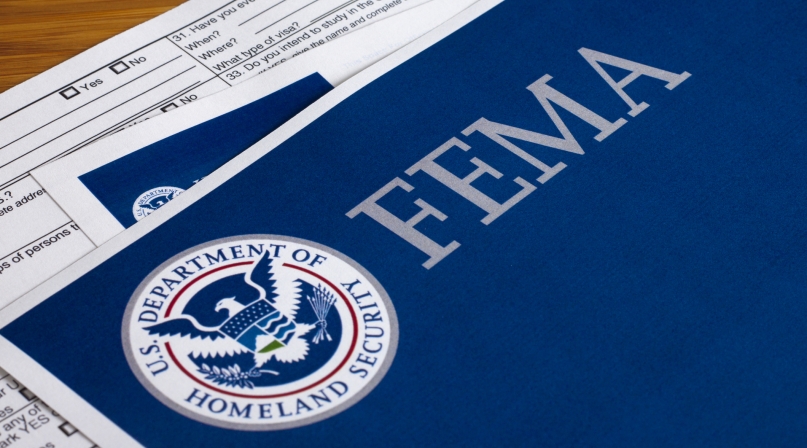House T&I Committee passes bipartisan FEMA reform package with major wins for counties
Author

Brett Mattson

Naomi Freel
Upcoming Events
Related News

Key Takeaways
View NACo's full analysis of the FEMA Act
SEPTEMBER 3, 2025 UPDATE: Today, the Fixing Emergency Management for Americans (FEMA) Act (H.R. 4669) passed out of the Transportation & Infrastructure Committee by a vote of 57-3. The bill now awaits action on the House floor.
SEPTEMBER 2, 2025 UPDATE: The Fixing Emergency Management for Americans (FEMA) Act (H.R. 4669) will be marked up tomorrow, September 3, at 10:00 a.m. EST in the House Transportation and Infrastructure Committee. An amendment in the nature of a substitute (ANS) will be considered, consisting mostly of technical and minor changes. The major addition is the inclusion of the FEMA Loan Interest Payment Relief Act (Sec. 122), which would allow interest incurred on loans to be reimbursed through FEMA’s Public Assistance program. NACo supported this provision in the 118th Congress and continues to support its inclusion in the package. To learn more about the FEMA Act, check out NACo’s full analysis here.
AUGUST 12, 2025 UPDATE: Since this blog's original publication, NACo released a full analysis of the Fixing Emergency Management for Americans (FEMA) Act (H.R.4669), including a detailed breakdown of key provisions and what they mean for counties. Click here to read the full analysis.
On July 24, the U.S. House Transportation and Infrastructure (T&I) Committee Chair Sam Graves (R-Mo.) and Ranking Member Rick Larsen (D-Wash.) released the bipartisan Fixing Emergency Management for Americans (FEMA) Act (H.R.4669), to dramatically overhaul the Federal Emergency Management Agency (FEMA). NACo provided actionable recommendations to T&I majority and minority staff throughout the drafting process and are proud to see many of these items represented in the final text. Following the bill’s introduction, NACo sent a letter to T&I leadership expressing support for the legislation and outlining how its provisions would strengthen emergency response and recovery efforts for counties across the nation.
Read H.R. 4669 View NACo's Letter of Support
Key highlights from the bill text
- FEMA structure: The bill would establish FEMA as an independent, cabinet-level agency, removing it from the U.S. Department of Homeland Security.
- Public Assistance (PA) reforms: The bill would make sweeping changes to expedite funding and make the PA program more effective, including:
- Transitioning the PA program from a reimbursement to a grant model, with the opportunity for grants to be made directly to counties. FEMA would have 120 days from the date of cost estimate submission to make funding available.
- Creating a sliding federal cost-share ranging from 65 to 85 percent, tied to the implementation of state and local mitigation measures.
- Streamlines environmental and historic preservation (EHP) reviews.
- Additionally, it incorporates the NACo-endorsed Disaster Management Cost Modernization Act (H.R. 744/S. 773) which would allow management costs to be spread across multiple disasters, offering counties more flexibility in administrative planning.
- Individual Assistance (IA) reforms: The bill would streamline and improve aid for disaster survivors through the IA program by:
- Creating a universal disaster application to simplify and speed up the process of accessing assistance.
- Expanding FEMA’s authority to repair homes beyond basic habitability, addressing a current limitation that often leaves survivors in unsafe conditions.
- Prohibiting FEMA from issuing denial letters prior to final determination of available insurance.
- Directing FEMA to provide alternative methods of determining eligibility for disaster survivors without a fixed address.
- Clarifying that receiving a loan or receiving charitable donations does not constitute duplication of benefits.
- Mitigation reforms: The bill includes several changes to FEMA’s suite of mitigation programs, including:
- Allowing states to develop a list of pre-approved mitigation projects and requiring at least one mitigation project per county, enabling faster implementation once funding becomes available.
- Restructuring FEMA’s pre-disaster mitigation program by moving it to a formula-based grant to improve predictability.
- Consolidating applications for pre and post disaster mitigation funding to expedite the review process and reduce administrative burden on counties.
- Ensuring flexibility in definition of building codes to allow for states to account for state-specific hazards.
- Transparency: In a major win for counties, the bill would create a PA dashboard that publicly displays information for each major disaster declaration including cost estimates, status of review and approval, and project-level updates.
Next steps
The bill now awaits action from the T&I Committee, which will not take place until the House returns from August recess on September 2. We expect a markup of the bill shortly thereafter.
NACo hosted a national membership call on Tuesday, July 29 at 2:30 PM ET to discuss the bill and the impact on counties, and will be putting out a more in-depth analysis in the coming days. To watch the recording, please click here.
County impact
This bill responds directly to county feedback, including major reforms that would speed up recovery timelines, ease administrative burdens and improve support for survivors. Counties will be especially encouraged by the PA reforms, universal disaster application and PA dashboard - all of which are essential to building stronger, more resilient communities. Many of these proposals were recommended by the NACo Intergovernmental Disaster Reform Task Force, which continues to work toward meaningful FEMA reform to improve disaster mitigation, response and recovery efforts across the country.
Resource
Fixing Emergency Management for Americans (FEMA) Act: A County-Level Analysis

Related News

CMS requires state Medicaid suspension upon arrest versus termination
Effective January 1, 2026, federal law now requires states to suspend, rather than terminate, Medicaid coverage when an individual is incarcerated.

ICE hiring surge challenges county law enforcement
Local governments hope that their law enforcement personnel will favor the familiarity of the communities they serve when weighing potentially lucrative immigration enforcement recruitment bonuses, which may require them to uproot their lives.

County officials moonlight in search and rescue roles
For some county officials, participating in search and rescue operations is another way to serve their communities, and make it safer for people to enjoy natural recreation resources.